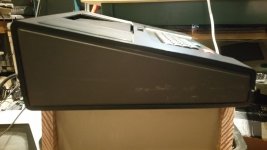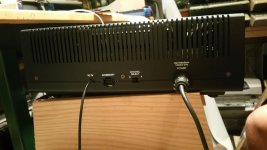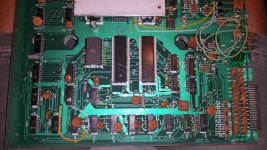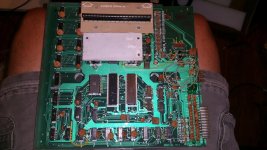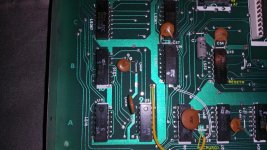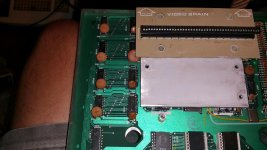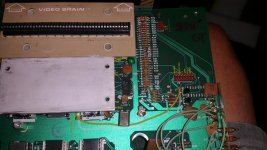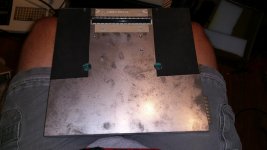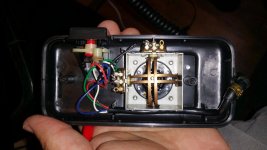falter
Veteran Member
Been wanting one of these for eons... finally got one at a not crazy price.

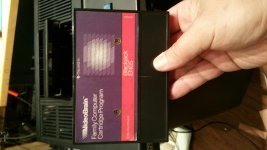
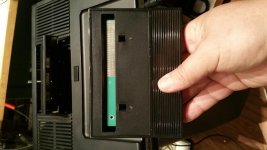
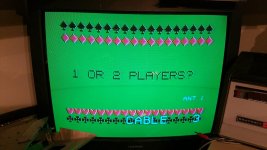
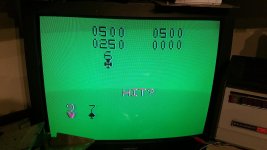
Pretty much what I thought it would be, which is rare -- usually these things end up being bigger or much smaller than the pictures suggest and work way differently than what I expect. The keyboard is almost comparable to a modern USB keyboard in terms of feel -- definitely better than the Commodore 64 I grew up with, although the lack of a separate Return key is a bit.. odd.
The cartridge mechanism needs some work.. doesn't want to lock down. The cartridges are bizarre.. it's sort of like a Nintendo where you push it down. But they're huge for what they are!
The joysticks do not seem to self-center. I'm not sure if that's a feature or if they've just worn out. I can't get Blackjack to respond to their movements (you're supposed to use them to place bets, etc), but the fire buttons work.
Strange little machine. Together with the Interact Model One and the Bally Computer, I'd say we have an 'unholy' trinity to balance the PET, TRS-80 and Apple II.





Pretty much what I thought it would be, which is rare -- usually these things end up being bigger or much smaller than the pictures suggest and work way differently than what I expect. The keyboard is almost comparable to a modern USB keyboard in terms of feel -- definitely better than the Commodore 64 I grew up with, although the lack of a separate Return key is a bit.. odd.
The cartridge mechanism needs some work.. doesn't want to lock down. The cartridges are bizarre.. it's sort of like a Nintendo where you push it down. But they're huge for what they are!
The joysticks do not seem to self-center. I'm not sure if that's a feature or if they've just worn out. I can't get Blackjack to respond to their movements (you're supposed to use them to place bets, etc), but the fire buttons work.
Strange little machine. Together with the Interact Model One and the Bally Computer, I'd say we have an 'unholy' trinity to balance the PET, TRS-80 and Apple II.

